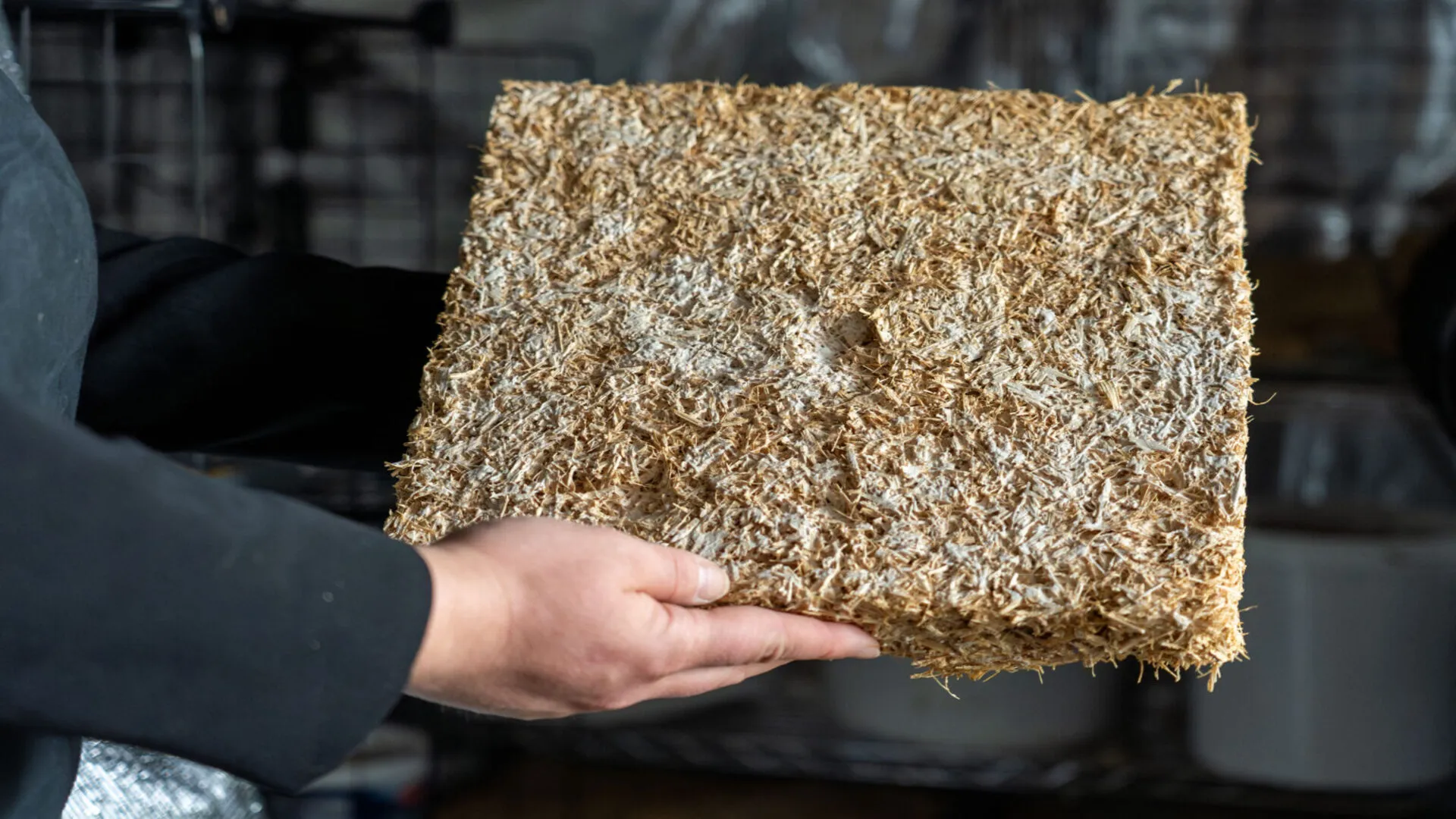
Researchers in Germany have created a mushroom-based insulation material that could offer a greener, compostable alternative to synthetic building materials and even capture carbon along the way.
Conducted by the Institute for Circular Economy of Bio:Polymers (ibp) at the Hof University of Applied Sciences in Germany, the project, dubbed Mycobuild, aims to build mushroom mycelium boards from lab-scale to industrial production by 2026.
Contrary to conventional insulation materials, which often consist of synthetic or mineral materials produced with high energy intensive consumption and a poor environmental balance, the new panels are grown using fungal networks.
“Mushroom meshes actually offer numerous advantages: they are compostable, store CO2 and require less energy to produce than conventional fossil-based insulating materials,” Robert Honke, PhD, a professor at the university and project leader, stated. “They can also be shaped flexibly and are industrially scalable.”
Boards that store carbon
The project consists of several crucial steps, the first of which includes preparing a substrate from locally available plant residues, such as dry straw. This serves as a breeding ground for the selected types of native fungi.
The scientists then add the mycelium to the substrate and let it grow through the material in the desired form within a few days. As it spreads, the fungal network binds the components together into a solid composite, which is then dried and heated to inactivate the fungus and stabilize the structure.
As per the researchers, one of the main challenges is growing the fungi under strictly controlled conditions, as even minor contamination can destroy the entire culture. This requires sterile environments and careful selection of the substrate.
Katharina Wellmanns, PhD, a research associate at the university, explained that finding the right balance remains a great challenge. “The substrate must provide enough nutrients for the mycelium to grow optimally, but must not contain too many sugars to prevent mold growth.”
To test the material’s flexibility, moisture absorption and thermal conductivity the team then carries out multiple extensive tests. This enables them to determine if the insulation boards meet the requirements of the construction industry.
Meanwhile, to eliminate moisture penetration and reduce the risk of mold, one of the main barriers to commercial adoption, the team also integrated a mineral top layer to the boards. It was developed by building materials firm Johann Bergmann GmbH & Co. KG.
New eco-friendly insulation
The scientists apply the coating in multiple stages and rigorously test it to ensure the material retains its properties. As the technology progresses, they may soon develop fully waterproof mycelium-based insulation. This will effectively eliminate mold issues.
“Our tests show that the mineral top layer not only protects the material, but also increases its strength,” Wellmanns explained. “We are working on optimizing the manufacturing process to achieve complete waterproofing.”
The team revealed that native mushrooms, such as oyster, honeydew, fox bolete or giant mushroom, are particularly promising for the project. This is due to the fact that they can grow at room temperature and do not require any additional heating or cooling measures.
“Choosing the right type of mushroom is crucial,” Wellmanns noted, adding that while some mushrooms grow faster, others form more stable structures. “The oyster mushroom in particular has proven to be a robust candidate, as it spreads quickly and forms dense networks.”
Selecting the right nutrient substrate plays a great role in mushroom cultivation, as excess sugar can promote unwanted germ growth. Meanwhile, Honke stated that regardless of the innovation’s potential, there are still consumer concerns.
“Many people might be skeptical about an insulation material that is based on fungi, as they fear that this could lead to mold problems in their homes,” he said in a press release.
Backed by Germany’s DATIpilot program, the researchers are now focused on scaling production and meeting industrial building standards. If successful, the project could not only cut emissions and waste but also reshape how we insulate our homes for good.



